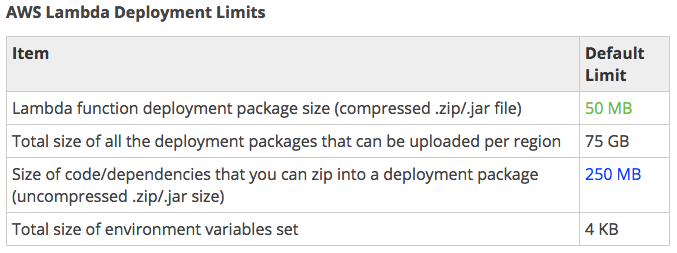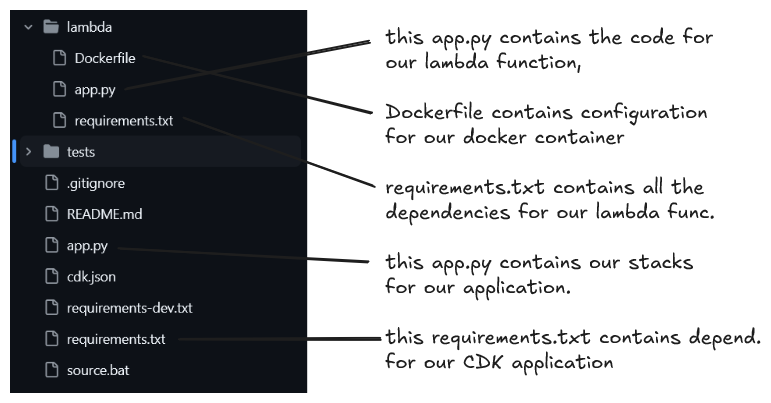AWS Lambda & it's layered problems 🧵
 Anirudh Singh Bhadauria
Anirudh Singh Bhadauria
AWS Lambda a serverless compute service used for performing short running tasks, With lambda we can write code in JavaScript, Python, Java or Ruby and execute that code whenever we want or when a specific event happens.
For example, I am writing some logic to load data into a warehouse, like Google's BigQuery. To do this, we need the google-cloud-bigquery module. We use "layers" in Lambda to add this module to our Lambda environment.
We create a zip file containing the necessary dependencies, save it to an S3 bucket, and provide the file path to the layers.
mkdir my-lambda-layer && cd my-lambda-layer
mkdir -p aws-layer/python/lib/python3.11/site-packages
nano requirements.txt
(put your dependencies here, like: google-cloud-bigquery)
pip install -r requirements.txt --target aws-layer/python/lib/python3.11/site-packages
cd aws-layer
zip -r9 lambda-layer.zip .
Now, this should work. In fact, it will work! Since we only have a single module in our requirements.txt, the created zip file is smaller in size and will function correctly.
Actually, we can add up to five layer zip files in a Lambda function. This allows each layer to be small in size and enables us to add more modules. But…
THE PROBLEM
Lambda has some deployment size limitations!

As our project grows or if we want to use some machine learning models for certain Lambda functions, we might need many modules. This can exceed the allowed limits, which is a problem. Fortunately, there is a solution to this issue.
THE SOLUTION
This problem can be solved by deploying a Docker built Lambda function with AWS CDK ✨
There are some prerequisites for this solutions,
Firstly we need to install and configure our AWS CLI, for doing this here are the amazon docs, AWS CLI installation and configuration
Then we need to have Docker installed and fully configured and keep the daemon running throughout this process. Here’s a link for this Docker installation and configuration
We need to setup a CDK (Cloud development kit) installed and configured CDK installation and configuration
Once you have set up CDK, we need to set up the project,
mkdir cdk_docker_lambda && cd cdk_docker_lambda
cdk init --language python
source .venv/bin/activate
pip install -r requirements.txt && pip install -r requirements-dev.txt
cdk deploy
This should be our project structure,

After writing the code for our Lambda function, and writing our Dockerfile and stack properly (reference git repository for that, Lambda with Docker) we can test it locally:
Ensure the Docker daemon is running. Open your terminal, go to the root of the CDK application, and run this command:
docker build -t youtube-sentiment-final/lambda .This will create a Docker image. After that, we need to run this image as a container.To run our container, use:
docker run -p 9000:8080 -e AWS_ACCESS_KEY_ID="ACCESS_KEY" -e AWS_SECRET_ACCESS_KEY="SECRET_KEY" root_folder/lambda:latestTo test this, we will use a curl command:
curl -X POSThttp://localhost:9000/2015-03-31/functions/function/invocations-H 'Content-Type: application/json' -d '{YOUR JSON PAYLOAD }'
After testing our Lambda function locally, we can deploy it to our AWS account by running this command in our terminal: cdk deploy
Now, we can see our Lambda function deployed on our AWS dashboard. Congratulations 🎉
Here is the GitHub repository for all the code and reference, Lambda with Docker
Thanks for reading ✨ We hope you found these insights valuable. If you learned something new today, don't forget to share this knowledge with others who might benefit from it.
Let’s connect on, Twitter , Linkedin Find all the other important links at, Linktree
Until next time! Goodbye 👋🏻
Subscribe to my newsletter
Read articles from Anirudh Singh Bhadauria directly inside your inbox. Subscribe to the newsletter, and don't miss out.
Written by

Anirudh Singh Bhadauria
Anirudh Singh Bhadauria
Hello world!, I am a software engineer, I integrate Data engineering and software engineering together to make beautiful software solutions that actually solves problem.